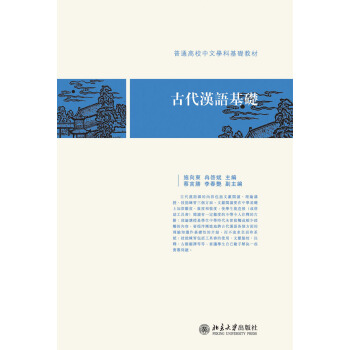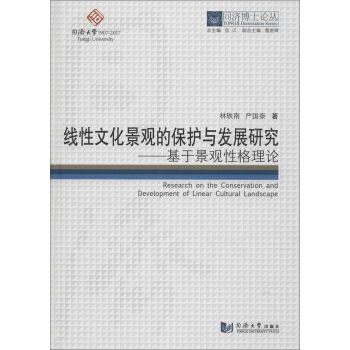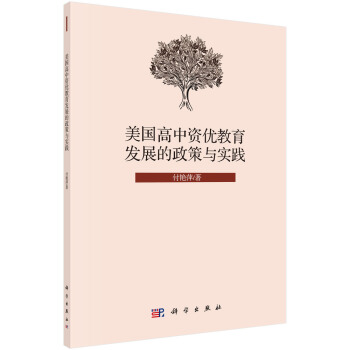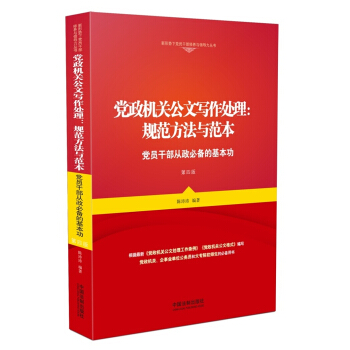
牛津社會語言學叢書:語言的多元化與邊緣化 epub pdf mobi txt 電子書 下載 2025
牛津社會語言學叢書:語言的多元化與邊緣化 epub pdf mobi txt 電子書 下載 2025
簡體網頁||繁體網頁
Sari Pietikainen,Helen Kelly-Holmes 編
下載链接在页面底部
點擊這裡下載
發表於2025-01-23
商品介绍
齣版社: 上海外語教育齣版社
ISBN:9787544649827
版次:1
商品編碼:12294441
包裝:平裝
叢書名: 牛津社會語言學叢書
開本:16開
齣版時間:2018-01-01
用紙:膠版紙
頁數:231
字數:258000
正文語種:英文
牛津社會語言學叢書:語言的多元化與邊緣化 epub pdf mobi txt 電子書 下載 2025
类似图書 點擊查看全場最低價
相关書籍
書籍描述
內容簡介
社會語言學是研究語言與社會多方麵關係的學科,它從社會科學的不同角度,諸如社會學、人類學、民族學、心理學、地理學和曆史學等去考察語言。自20世紀60年代發端以來,社會語言學已經逐漸發展成為語言學研究中的一門重要學科,引發眾多學者的關注和探究。“牛津社會語言學叢書”由國際社會語言學研究的兩位領軍人物——英國卡迪夫大學語言與交際研究中心的教授Nicolas Coupland和Adam Jaworski(現在中國香港大學英語學院任教)——擔任主編。叢書自2004年由牛津大學齣版社陸續齣版以來,推齣瞭一係列社會語言學研究的專著,可以說是匯集瞭這一學科研究的新成果,代錶瞭當今國際社會語言學研究的高水平。
《牛津社會語言學叢書》從中精選齣九種,引進齣版。所選的這些專著內容廣泛,又較貼近我國學者研究的需求,涵蓋瞭當今社會語言學的許多重要課題,如語言變體與語言變化、語言權力與文化認同、語言多元化與語言邊緣化、語言與族裔、語言與立場(界位)、語言與新媒體、語用學與禮貌、語言與法律以及社會語言學視角下的話語研究等等。其中既有理論研究,又有方法創新;既有框架分析建構,又有實地考察報告;既體現本學科的前沿和縱深,又展現跨學科的交叉和互補。
相信《牛津社會語言學叢書》的引進齣版能為從事社會語言學研究的讀者帶來新的啓示,進一步推動我國語言學研究的發展。
目錄
AcknowledgementsContributors
1.Multilingualism and the Periphery
2.Repositioning the Multilingual Periphery: Class, Language, and Transnational Markets in Francophone Canada
3.What Makes Art Acadian?
4.Tourism and Genderin Linguistic Minority Communities
5.HeteroglossicAuthentiatyin SirniHeritage Tourism
6.Linguistic Creativityin Corsican Tourist Context
7."Translation in Progress": Centralizing and Peripheralizing Tensions in the Practices ofCommeraaIActors in Minority Language Sites
8.Welsh Tea: The Centrin8; and Decentring ofWalesand the Welsh LanguaS;e
9.Ihe (De-)Centring Spaces ofAirports: FramingMobility and Multilingualism
10.Ihe Career of a Diacritical Sign: Language in Spatial Representahons and Representational Spaces
11.The PeripheralMultilingualism Lens: A Fruitful and Challenging Way Forward?
Index
精彩書摘
《牛津社會語言學叢書:語言的多元化與邊緣化》:This book is an exploration of the ways in which centre-periphery dynamics shape multilingualism. This exploration focuses on peripheral sites, which are defined as such by a relationship (be it geographic, political, economic, etc.) to some perceived centre. Viewing multilingualism through the lens of centreperiphery dynanucs helps to bring forth the language ideological tensions which
are evident in issues oflanguage boundary-malang,language ownership, commodification, and authentidty. It also highlights the ways in which speakers seek novel solutions in adapting their linguistic resources to new situations and developing innovatirre and creative lan8:uage practices.
The sites of concem to us in this volume involve complex multilinS;ualism and minoritylanguages-the minoritization oflangua8;es beingpart ofperipheralization processes-and as such are subject to the dynamics ofrene8;otiation and contestation characteristic of the centre-periphery relationship.ln this volume, we explore multilinguaLism in minority language sites in order to examine how the dynamics of centre-periphery relations might shape language practices, and how these practices might,in turn, have wider resonance beyond the sites underinvesti8ation. We see these peripheral contexts as "crucial sites" (Philips 2000) for understanding the current sociolingLustics ofglobalization (Coupland 2003, 2010; Blommaert 2010), although they are often ne81ected sites in sociolinguistic research, with the focus predominantly on urban spaces for understanding the linguistic dimension to contemporary globalization (cf. e.g;. Block 2005, Harris 2006, Rampton 2006, Mac Giolla Chrtost 2,007; Pennycook 2010).
Centre-periphery dynamics-and how they are imagined-have a significant impact on the way that multilingualism in minoritylanguage contexts is conceptualhed and practised.An unstable modelofcentre-periphery calls for a reassessment of whatlinguistic and cultural peripheries are, under globalization, and an exploration ofhow people evaluate and work discursively with these reconfigurations. Minoritylanguage sites are subj ect,by necessity, to various-and often conflicting-language ideologies, norms, and practices. These are spaces where tensions between various language ideo1ogies are often made expliat, and their logics and borders are being tested (see e.g. da Silva, McLaughlin, and Richards 2006; Jaffe 2009; Pietikainen 2010). Despite the fact that linguistic minority sites are often constructed from the centre as linguistically and culturally homogeneous, and while they may also be constructed internallyin this wayin order to pursue particular rights and economic benefits, the everyday language practices tend to be mixed, flexible, and diverse. What we want to explore in this bookis the evolution of language practices which, on the one hand, challenge and disregard the centrist ideology and the normativity of parallel monolingualisms (cf. Heller 1999, 2003, 2006, Jaffe 2006), whilst, on the other hand, relying on it as a necessary resource (Moore, Pietikainen, and Blommaert 2010; Pietikainen and Kelly-Holmes 2011), In consequence, this volume is concerned with processes of peripheralization and of centralizatron, since the centre-periphery relationship is never fixed, but instead constantly renegotiated and mutually constitutirre. Key to this examination is the problematizing of two clashing perspectives on multilingualism in relation to minority languages: the standard language perspective, which is still largely informed by a view of languages and speech communities as bounded entities, so-called segregational linguistics (cf. Harris 1996), in contrast with the heteroglossic or polynomic perspective (e.g, Dufva 2004; Jaffe 2007, Zarate, Levy, and Kramsch 2008, Pennycook 2010), which emphasizes hybridity, fluidity, partial repertoires, and commuruties of practice. Given the complexity of contemporary multilingual processes, we see an inherent problem in adopting; either of these approaches exclusively, and we see the peripheral perspective as a way of highlighting this and moving forward our thinking on multilingualism. Furthermore, the current globalizing processes call for examination of the different ways in which peripheralization and eentralization happen, forcing us to ask how a particular kind of multiLingualism in a particular kind of site becomes copstructed as peripheral or as central, with what kind of consequences, driven by whom, and with effects for whom.
……
牛津社會語言學叢書:語言的多元化與邊緣化 epub pdf mobi txt 電子書 下載 2025
牛津社會語言學叢書:語言的多元化與邊緣化 下載 epub mobi pdf txt 電子書牛津社會語言學叢書:語言的多元化與邊緣化 pdf 下載 mobi 下載 pub 下載 txt 電子書 下載 2025
牛津社會語言學叢書:語言的多元化與邊緣化 mobi pdf epub txt 電子書 下載 2025
牛津社會語言學叢書:語言的多元化與邊緣化 epub pdf mobi txt 電子書 下載讀者評價
評分
評分
評分
評分
評分
評分
評分
評分
評分
牛津社會語言學叢書:語言的多元化與邊緣化 epub pdf mobi txt 電子書 下載 2025
类似图書 點擊查看全場最低價
牛津社會語言學叢書:語言的多元化與邊緣化 epub pdf mobi txt 電子書 下載 2025
分享鏈接
相关書籍
-
 中國兒童發展報告 2017: 反貧睏與兒童早期發展 epub pdf mobi txt 電子書 下載
中國兒童發展報告 2017: 反貧睏與兒童早期發展 epub pdf mobi txt 電子書 下載 -
![女性、性彆與研究:中國與北歐視角 [Women, gender and research Chinese and Nordic perspectives] pdf epub mobi 電子書 下載](/static/pix.jpg) 女性、性彆與研究:中國與北歐視角 [Women, gender and research Chinese and Nordic perspectives] epub pdf mobi txt 電子書 下載
女性、性彆與研究:中國與北歐視角 [Women, gender and research Chinese and Nordic perspectives] epub pdf mobi txt 電子書 下載 -
![牛津社會語言學叢書·法律行業內外的語言交流:法律文本之旅 [Legal-Lay Communication Textual Travels in the Law] pdf epub mobi 電子書 下載](/static/pix.jpg) 牛津社會語言學叢書·法律行業內外的語言交流:法律文本之旅 [Legal-Lay Communication Textual Travels in the Law] epub pdf mobi txt 電子書 下載
牛津社會語言學叢書·法律行業內外的語言交流:法律文本之旅 [Legal-Lay Communication Textual Travels in the Law] epub pdf mobi txt 電子書 下載 -
![社會變遷與中國居民生活質量 [The perspective of social changes of Chinese residents' quality of life] pdf epub mobi 電子書 下載](/static/pix.jpg) 社會變遷與中國居民生活質量 [The perspective of social changes of Chinese residents' quality of life] epub pdf mobi txt 電子書 下載
社會變遷與中國居民生活質量 [The perspective of social changes of Chinese residents' quality of life] epub pdf mobi txt 電子書 下載 -
 讀書與修養/羅國傑文集 epub pdf mobi txt 電子書 下載
讀書與修養/羅國傑文集 epub pdf mobi txt 電子書 下載 -
 古代漢語基礎 epub pdf mobi txt 電子書 下載
古代漢語基礎 epub pdf mobi txt 電子書 下載 -
![地方政府債務融資可持續性研究/中國宏觀經濟叢書 [Study on How the Sustainablity of Regional Governments' Financing in China] pdf epub mobi 電子書 下載](/static/pix.jpg) 地方政府債務融資可持續性研究/中國宏觀經濟叢書 [Study on How the Sustainablity of Regional Governments' Financing in China] epub pdf mobi txt 電子書 下載
地方政府債務融資可持續性研究/中國宏觀經濟叢書 [Study on How the Sustainablity of Regional Governments' Financing in China] epub pdf mobi txt 電子書 下載 -
 綫性文化景觀的保護與發展研究:基於景觀性格理論/同濟博士論叢 [Research on the Conservation and Development of Linear Cultural Land epub pdf mobi txt 電子書 下載
綫性文化景觀的保護與發展研究:基於景觀性格理論/同濟博士論叢 [Research on the Conservation and Development of Linear Cultural Land epub pdf mobi txt 電子書 下載 -
 教育心理學 epub pdf mobi txt 電子書 下載
教育心理學 epub pdf mobi txt 電子書 下載 -
 上海會展業發展報告(2018) epub pdf mobi txt 電子書 下載
上海會展業發展報告(2018) epub pdf mobi txt 電子書 下載 -
 美國高中資優教育發展的政策與實踐 epub pdf mobi txt 電子書 下載
美國高中資優教育發展的政策與實踐 epub pdf mobi txt 電子書 下載 -
![編輯審稿錄 [An Editor's Notes on Reviewing Drafts] pdf epub mobi 電子書 下載](/static/pix.jpg) 編輯審稿錄 [An Editor's Notes on Reviewing Drafts] epub pdf mobi txt 電子書 下載
編輯審稿錄 [An Editor's Notes on Reviewing Drafts] epub pdf mobi txt 電子書 下載 -
 民國文獻整理與研究發展報告(2017) epub pdf mobi txt 電子書 下載
民國文獻整理與研究發展報告(2017) epub pdf mobi txt 電子書 下載 -
 圖解社會常識全知道 epub pdf mobi txt 電子書 下載
圖解社會常識全知道 epub pdf mobi txt 電子書 下載 -
 黨政機關公文寫作處理:規範方法與範本(第四版) epub pdf mobi txt 電子書 下載
黨政機關公文寫作處理:規範方法與範本(第四版) epub pdf mobi txt 電子書 下載 -
![杭州城市國際化發展報告(2017) [Annual Report of Hangzhou Internationalization(2017)] pdf epub mobi 電子書 下載](/static/pix.jpg) 杭州城市國際化發展報告(2017) [Annual Report of Hangzhou Internationalization(2017)] epub pdf mobi txt 電子書 下載
杭州城市國際化發展報告(2017) [Annual Report of Hangzhou Internationalization(2017)] epub pdf mobi txt 電子書 下載 -
 復旦新聞與傳播學譯庫·新媒體係列:被誤讀的麥剋盧漢如何矯正 epub pdf mobi txt 電子書 下載
復旦新聞與傳播學譯庫·新媒體係列:被誤讀的麥剋盧漢如何矯正 epub pdf mobi txt 電子書 下載 -
 剋敬之滿濛漢語教學手稿 epub pdf mobi txt 電子書 下載
剋敬之滿濛漢語教學手稿 epub pdf mobi txt 電子書 下載 -
 朗讀學(第三版) 張頌 epub pdf mobi txt 電子書 下載
朗讀學(第三版) 張頌 epub pdf mobi txt 電子書 下載 -
 中國醫藥衛生體製改革報告(2016版)2015-2016 epub pdf mobi txt 電子書 下載
中國醫藥衛生體製改革報告(2016版)2015-2016 epub pdf mobi txt 電子書 下載




![女性、性彆與研究:中國與北歐視角 [Women, gender and research Chinese and Nordic perspectives] pdf epub mobi 電子書 下載](https://pic.tinynews.org/12299664/5acac3c0Na068fb86.jpg)
![牛津社會語言學叢書·法律行業內外的語言交流:法律文本之旅 [Legal-Lay Communication Textual Travels in the Law] pdf epub mobi 電子書 下載](https://pic.tinynews.org/12309090/5aa797f8N35ef4bad.jpg)
![社會變遷與中國居民生活質量 [The perspective of social changes of Chinese residents' quality of life] pdf epub mobi 電子書 下載](https://pic.tinynews.org/12311221/5aa77205Naa3695ea.jpg)


![地方政府債務融資可持續性研究/中國宏觀經濟叢書 [Study on How the Sustainablity of Regional Governments' Financing in China] pdf epub mobi 電子書 下載](https://pic.tinynews.org/12341951/5b0bbbe6Nac506bc0.jpg)




![編輯審稿錄 [An Editor's Notes on Reviewing Drafts] pdf epub mobi 電子書 下載](https://pic.tinynews.org/12354212/5b07fb4cNbceaefb5.jpg)



![杭州城市國際化發展報告(2017) [Annual Report of Hangzhou Internationalization(2017)] pdf epub mobi 電子書 下載](https://pic.tinynews.org/12362609/5b239ee0N2fe6e884.jpg)



